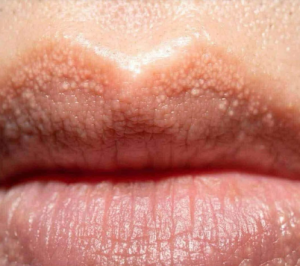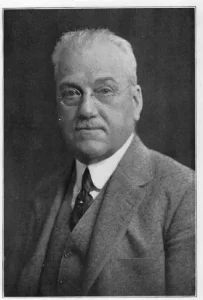At first look, seeing little, whitish-yellow pimples on your lips, within your cheeks, or around your genitals can be scary. People typically think the worst when they see these spots, including a viral infection, a sexually transmitted disease, or inadequate hygiene. But most of the time, what you’re seeing are Fordyce spots. This common, harmless skin disease will affect most people at some point. Dermatologist Dr. John Addison Fordyce first wrote about these patches in 1896. They are currently named after him and are known by doctors to be a normal anatomical variation, not a sickness.
Fordyce spots are small, pale, or yellowish-white lumps that can be found on the corners of the lips, inside the oral mucosa (the inner lining of the cheeks), and on the genital areas, such as the shaft of the penis, scrotum, labia, or the inner lining of the vagina. Fordyce spots typically measure between 1 and 3 mm in width and do not cause pain, itching, oozing, or spreading. The most important thing is that they are not communicable and are not connected to any ailment, sexually transmitted or otherwise.
Fordyce spots are ectopic sebaceous glands, which means they are oil-producing glands that are in locations where they shouldn’t be. Sebaceous glands are usually found near hair follicles, where they release sebum, an oily material that keeps the skin moist and safe. Fordyce spots are different from hair follicles since they can show up in places where there isn’t any hair development, such as the lips or genitals.
Fordyce spots are there from birth; however, they frequently become more apparent after puberty. During puberty, hormonal changes drive the sebaceous glands to make more oil, which might make these ectopic glands bigger and easier to see. These spots are more likely to show up on those with naturally oily skin or people whose hormones are changing, including during puberty, pregnancy, or menopause.

Fordyce spots are harmless but can be upsetting, especially if they appear on the lips or in private areas where they may be mistaken for something serious. People often mix up genital Fordyce spots with genital warts (which are caused by HPV), herpes lesions, molluscum contagiosum, milia, or epidermoid cysts. Fordyce spots don’t have any of the symptoms that go along with these other illnesses, such as discomfort, itching, swelling, pus, or a tendency to spread. If you’re still not sure or are worried, it’s always best to see a dermatologist or other healthcare professional for a correct diagnosis. If you try to diagnose yourself, you can worry too much or get the wrong treatment.
If you don’t like how Fordyce spots look, for aesthetic or psychological reasons, there are treatments available, but they aren’t medically essential. The Cleveland Clinic lists several procedures and topical treatments that can help get rid of or lessen the spots:
Cryotherapy works by freezing the region with liquid nitrogen, which kills the undesirable tissue. This is a rapid, noninvasive treatment, although it can take more than one session, and there is a slight chance that the skin will change color or scar.

Electrodessication uses a high-frequency electric current to dry up and get rid of the spots. It is widely used to treat many types of skin lesions and can work quite well; however, it may cause some redness and pain for a short time.
Laser skin resurfacing, using CO₂ or pulsed dye lasers, works on the top layers of the skin to smooth out rough patches and make them less visible without hurting the skin around them too much.
Micro-punch surgery is a minimally invasive process in which a specific pen-like tool is used to manually remove each area. It is very accurate, but it is usually only used in serious or rare cases because it requires a lot of detail.
Topical therapies, such as retinoid creams (like tretinoin), may also help by slowly decreasing the sebaceous glands and encouraging healthy cell turnover. Use retinoids only with a doctor’s help, as they can irritate sensitive skin.
It is very crucial to underline that home treatments and self-removal procedures should not be used. If you squeeze, scrape, or pick at Fordyce spots, you could have infections, swelling, and scars that are far worse than the original problem. Over-the-counter acne treatments, abrasive scrubs, or antiseptics don’t usually work and can even make things worse.
If you don’t want treatment, the best way to manage Fordyce spots is to care for your skin. To keep your skin clean, wash it gently with warm water and a gentle soap, especially in areas that are sensitive. Harsh cleansers, too much washing, and fatty skin products can all irritate the skin or block additional oil glands, which could make the spots more noticeable. Using a mild, non-comedogenic moisturizer can help keep your skin in balance and ease inflammation.
In short, Fordyce spots are quite common, innocuous, and non-infectious skin traits that many people have but don’t talk about very much. People may be worried or embarrassed by their look, but they are a normal feature of the human body and normally don’t need medical attention. Cosmetic procedures are available for those who dislike their appearance, but they must be done carefully and with a doctor. The most important thing is to know that Fordyce’s spots are natural and nothing to be embarrassed about. This can help lessen the stigma and worry over them.
